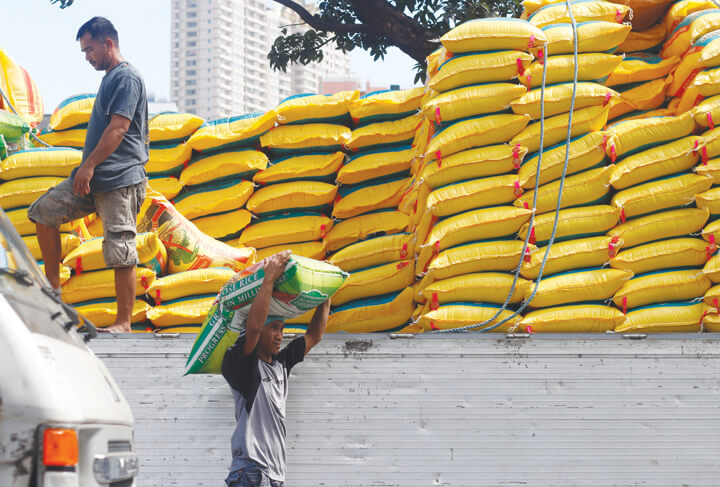Tags
Trade jitters seen cutting price of rice imports
Ada Pelonia

The quotation for imported rice could further decline after Washington announced the reciprocal tariffs it will slap on the trading partners of the United States, according to analysts.
BMI, a unit of Fitch Solutions, recently reported that rice futures posted the largest annual decline among grains after US President Donald Trump unveiled America’s new trade policy last week.
“Following the announcement of US reciprocal tariffs, we have seen bearish sentiment across grains markets,” the research firm said in its report.
“The closing price on April 2 for rice represented the largest year-on-year decrease, of 17.9 percent year-on-year and we forecast prices to remain below recent averages throughout 2025.”
The BMI said soybean trailed with a 12 percent annual decrease, followed by wheat at 1.6 percent. Corn was the only grain the registered an increase at 5.5 percent, it added.
For the chief of the University of Asia and the Pacific’s (UA&P) Center for Food and Agribusiness (CFA), Trump’s move could signal a potential slide of the staple grain’s prices.
“Tariffs tend to increase the cost of goods for foreign buyers, which can lead to lower import volumes and push prices down further,” UA&P CFA Executive Director Marie Annette Galvez-Dacul told the BusinessMirror.
“Still, the overall effect will depend on how producers respond and how demand shifts globally, so the results could vary over time.”
Meanwhile, Roehlano Briones, a senior research fellow at the Philippine Institute for Development Studies (Pids), said grains are not spared from Washington’s new tariff scheme.
“World trade is at risk, including grains,” Briones told this newspaper.
The United States Department of Agriculture (USDA) noted that since February, global export quotes continued to decline sharply.
For instance, Vietnamese prices decreased by $7 per metric ton (MT) to $387 while Thai quotes dropped $19 per MT to $418 with reduced sales to Southeast Asian markets.
Pakistani quotes decreased $20 per MT to $380 and India is down $10 per MT to $400 with large supplies, it added.
Meanwhile, US prices dropped $19 per MT to $678 on weaker sales to Latin America, while Uruguayan quotes fell $56 per MT to $612 following the harvest of its new crop.
Last week, the Department of Agriculture (DA) said the country could import as much as 4 million metric tons (MMT) of rice this year, lower than the previous year’s record, due to the recovery of local paddy rice output.
Agriculture Assistant Secretary Arnel de Mesa said rice imports will decline this year after shipments of the food staple from other countries reached an all-time high of 4.8 MMT in 2024.
“The reasonable level of rice imports [this year is between] 3.8 MMT to 4 MMT,” De Mesa told reporters in a press briefing.
Data from the Bureau of Plant Industry (BPI) showed that rice arrivals as of March 27 stood at 804,347.09 metric tons (MT), 32.21 percent lower than the 1.19 MMT recorded in the first quarter of the previous year.
The country’s rice arrivals have been on a downward trend, with the monthly average shipment settling at around 270,000 MT this year from nearly 400,000 MT recorded a year ago.
“If this trend continues, rice imports will definitely decline.”
https://businessmirror.com.ph/2025/04/09/trade-jitters-seen-cutting-price-of-rice-imports/Published Date: April 10, 2025






